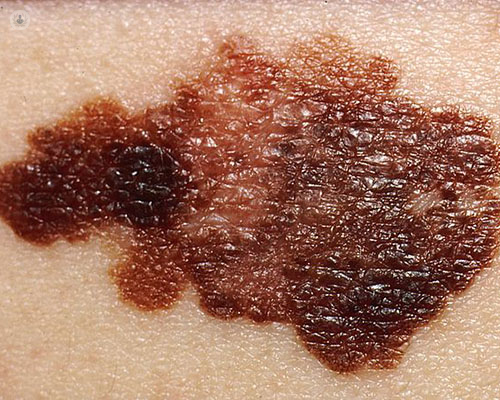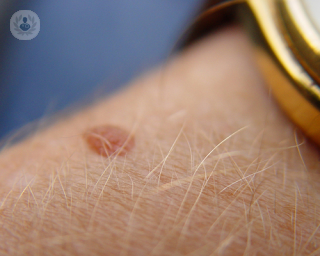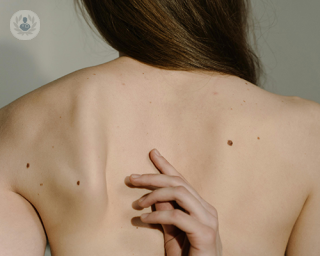Melanoma
Dr Raj Mallipeddi - Dermatology
Created on: 06-17-2013
Updated on: 08-21-2023
Edited by: Karolyn Judge
Melanoma is a type of skin cancer that forms from the skin cells called melanocytes, which give the skin its pigment. This type of skin cancer can also be called malignant melanoma and is the most dangerous form of skin cancer, with a mortality rate of around 20 per cent if the cancer goes undetected.

What causes melanoma?
Melanoma is most often caused by over-exposure to the sun’s harmful ultraviolet (UV) rays. It is more common in older people due to the cumulative effect of years of exposure to the sun, and is especially common in areas of the body that are more exposed to the sun such as the face, back of the neck, hands and arms. Due to this, melanoma is also more common in people with a fair complexion, and with people that have been sunburnt as a child.
Having said that, it is a myth that people with darker skin are not affected, as they also carry a risk if not protected from the sun. Where they commonly develop in areas that receive a lot of sun exposure in fair coloured skin, in darker skin types they more commonly develop on the soles of the feet, palms of the hand and in the finger nail beds, and can easily go unnoticed.
Melanoma can also be genetic, with around 5 per cent of cases of melanoma thought to be genetically passed on.
What are the symptoms of melanoma?
Melanomas are often noticed by the person rather than diagnosed by a doctor. A sign of a melanoma is a mole that changes shape or size, or that the border of the outline changes and becomes more blurred.
Another symptom is when a new mole, or pigmented section of skin appears where there was nothing before.
The key for checking a mole to look for signs of melanoma is the ABCDE acronym for the characteristics of melanoma:
- Asymmterical shape such as two halves of a mole having a different shape
- irregular Border when the mole has a ‘notched’ outline
- Change in colour such as uneven colours or multiple colours
- Diameter when the size changes, or when a mole is bigger than 6 millimetres in diameter.
- Evolving If the mole changes overtime, or develops other symptoms such as itchiness or bleeding.
How is melanoma treated?
The treatment of melanoma depends on the type of melanoma, the severity and the position on the body, and whether the cancer has spread.
Some of the options available to your doctor include surgery, with different methods available to remove the melanoma.
Radiotherapy may be considered if the cancer has spread, or it may be decided that a melanoma vaccine is the best option, which aims to kill the cells using the body’s own defence mechanisms. This form of treatment is still being developed.














